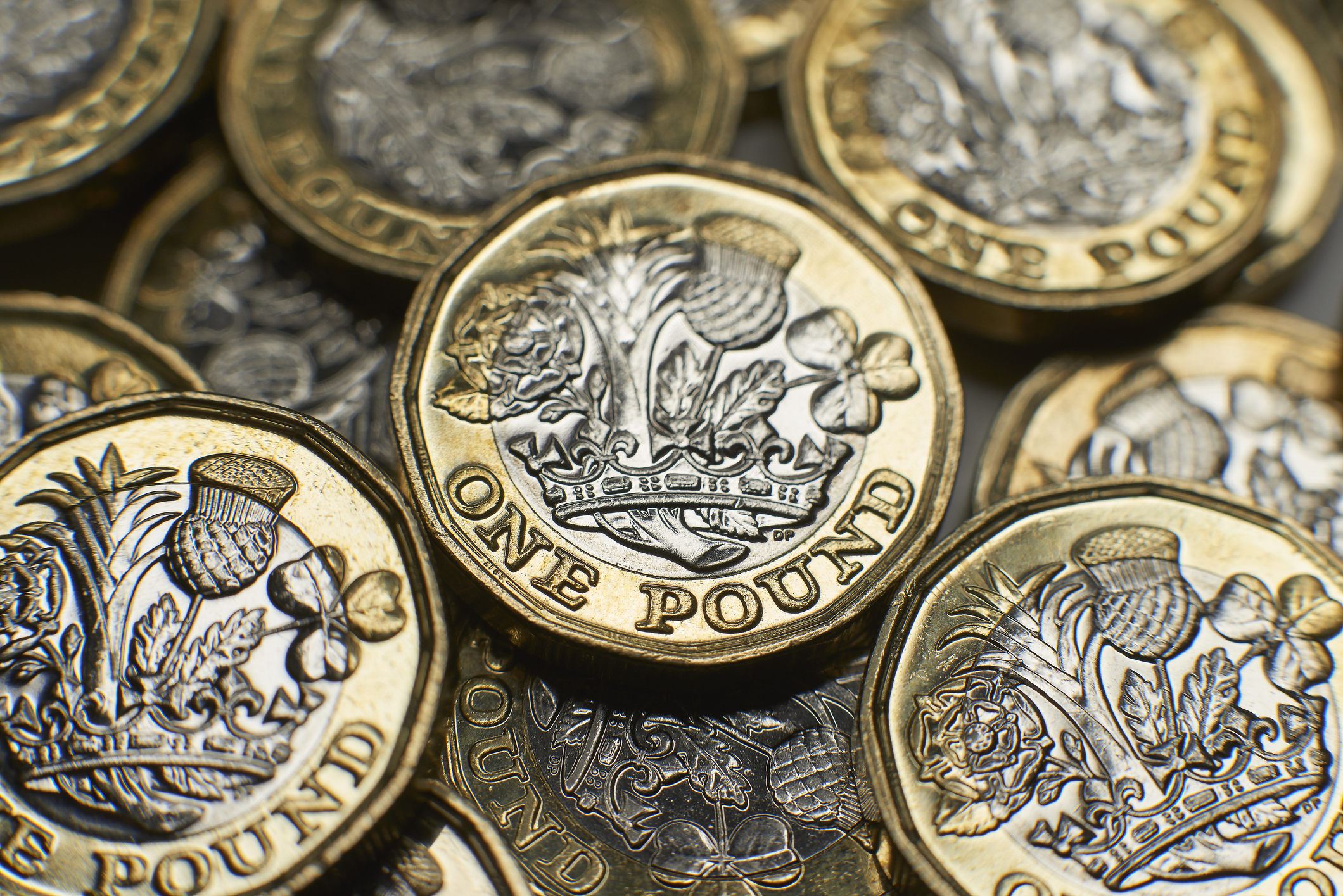Top 10% of earners pay more than half of all tax – here’s a dozen ways to pay less
Frozen tax thresholds are dragging millions more people into higher and additional rate tax brackets. Will you pay more?


The top 25% of income taxpayers will pay more than three quarters (76%) of all income tax this year, and it doesn’t take multi-millions to enter that category – you need to earn just £47,400.
In fact, if you earn £71,600, you’re in the top 10%, who pay more than half (59%) of all income tax, according to an analysis of government figures by wealth firm Hargreaves Lansdown.
The frozen tax thresholds mean many of the top 25% of earners will have been pushed into paying higher rate or additional rate tax over the past few years, while others have fallen over the cliff edge of earning £100,000.
MoneyWeek
Subscribe to MoneyWeek today and get your first six magazine issues absolutely FREE

Sign up to Money Morning
Don't miss the latest investment and personal finances news, market analysis, plus money-saving tips with our free twice-daily newsletter
Don't miss the latest investment and personal finances news, market analysis, plus money-saving tips with our free twice-daily newsletter
Sarah Coles, head of personal finance, Hargreaves Lansdown, said: “Higher earners are always going to be in the frame for more tax. They earn more, have the broadest shoulders, and will carry most of the burden.
“However, the level of tax they face has ramped up significantly, and thanks to frozen tax thresholds, it applies to many of those who don’t consider themselves to be super-rich.”
There are an estimated 7.08 million higher rate taxpayers this tax year 2025/26 – up 2.65 million since thresholds were frozen in 2021/22.
Plus there are an estimated 1.2 million additional rate taxpayers, an increase of 710,000 since 2021/22 – well over double.
The portion of higher earners’ income that falls between £100,000 and £125,140 is taxed particularly heavily, known as the 60% tax trap. For every £2 you earn over £100,000 you lose £1 of your personal allowance. By the time you earn £125,140 you’ve lost the lot, so on that chunk of your salary you effectively pay 60% tax.
If you have children, it’s even tougher, because at £100,000 you lose government support for childcare. Once you’ve breached £125,140 you pay 45% on the extra.
Tax on savings and investments
Crossing income tax brackets means higher earners also pay most tax on their savings and investments.
We look at the best savings accounts in a separate article.
Additional rate taxpayers pay more than half of all tax on savings (55%). Higher rate taxpayers pay 30% of it.
Basic rate taxpayers can make £1,000 on their savings without paying tax, for higher rate taxpayers it’s £500, and additional rate taxpayers pay tax from the first penny of interest – and because you’ll pay income tax on the extra interest, higher earners pay a higher rate too.
Higher earners also pay more on dividends – and are also contending with the fact that allowances were slashed from £2,000 to £500 between April 2022 and April 2024 – and the rate was raised in April 2022.
Higher rate taxpayers pay 43% of tax on dividends and additional rate taxpayers pay 42%.
Given that higher earners tend to hold more savings and investments, it means they’re paying a lot of tax.
Higher rate taxpayers will pay £1.8 billion of tax on savings this year and over £8 billion on dividends. Additional rate taxpayers will pay £3.35 billion of tax on savings and £7.8 billion on dividends. Between them they’ll pay 85% of both.
Meanwhile, the capital gains tax rate also rises when you move into paying higher rate tax, and the tax-free allowance on that has been cut dramatically from £12,300 to £3,000.
“All this means it’s worth getting to grips with tax hacks for higher earners,” said Coles.
12 legal tax tricks for higher earners
1) Salary sacrifice, if your employer offers it, is where you give up a portion of your salary, and spend it on certain things free of tax – including pensions. This will reduce the amount of income you pay higher tax rates on. It may also bring you down below tax thresholds – including the £100,000 cliff edge. See if you can use the scheme for any bonus too.
2) No salary sacrifice scheme? You can still pay into a SIPP – your very own pension pot for life – and receive tax relief at your highest marginal income tax rate.
3) Carry forward rules let you use any unused annual pension allowance from the previous three tax years – as long as it doesn’t add up to more than your income this year.
4) If you’re making income from savings interest, use a cash ISA to protect as much as possible from tax.
5) Take advantage of stocks and shares ISA allowances – where your investments are protected from dividend tax and capital gains tax.
6) You might want to act fast on your ISA allowances. There are rumours the cash ISA allowance could be cut, not necessarily in the current tax year, but you may want to act while you know where you stand.
7) Already have investments outside an ISA? You can move them inside using this year’s allowance – through the Bed & ISA process (where you sell holdings in your general account and then buy back the same holdings within your ISA).
8) If you have investments outside an ISA and have already used your ISA allowance for this tax year, you should consider realising up to £3,000 of gains, so you take advantage of this year’s capital gains allowance.
9) Plan as a couple. Married people and those in a civil partnership where your partner pays a lower rate of tax, can transfer income-producing assets into their name. This lets you both take advantage of your ISAs and tax allowances, and then the rest is taxed at their marginal rate rather than yours.
10) Don’t forget your children. In the current tax year, you can save or invest £9,000 in a Junior ISA for any qualifying child, and all interest, dividends or capital gains are tax free.
11) Have a look at venture capital trusts and enterprise investment schemes. These aren’t right for everyone, because they are very high risk so should only be considered as a small part of a large and diverse portfolio. However, you can get 30% income tax relief on the amount you invest via these schemes – which will reduce your overall tax bill.
12) If you’ll earn less in future, consider deferring income. If there’s a time when you expect to be paying a lower rate of tax, consider whether you can take income then rather than now. You can, for example, use fixed term savings that pay interest annually, instead of easy access paying more frequently. This often makes sense just before retirement.
Get the latest financial news, insights and expert analysis from our award-winning MoneyWeek team, to help you understand what really matters when it comes to your finances.
Laura Miller is an experienced financial and business journalist. Formerly on staff at the Daily Telegraph, her freelance work now appears in the money pages of all the national newspapers. She endeavours to make money issues easy to understand for everyone, and to do justice to the people who regularly trust her to tell their stories. She lives by the sea in Aberystwyth. You can find her tweeting @thatlaurawrites
-
 The most influential people of 2025
The most influential people of 2025Here are the most influential people of 2025, from New York's mayor-elect Zohran Mamdani to Japan’s Iron Lady Sanae Takaichi
-
 Millions of parents are missing out on up to £720 a year in extra pension cash – are you affected?
Millions of parents are missing out on up to £720 a year in extra pension cash – are you affected?A mum who narrowly missed out on the pension boost said she “never knew the government rule existed” and wants other parents to use it
